Table of Contents
TOP 10 BEST REASONS TO VISIT SERENGETI NATIONAL PARK IN TANZANIA
Top 10 best reasons to visit Serengeti National Park in Tanzania. The park is best known wildlife national park where you can witness the wildebeest migration (great migration). Serengeti National Park was named after the Maasai local word Siriget which means an open endless plain. This park is not only famous of the great wildebeest migration but also host a big range of different fauna and flora.
Reasons as to why you should visit Serengeti National Park are as follows;
1. Wildlife and Animals in Serengeti National Park
One of Tanzania’s most popular attractions is the Serengeti National Park. At any time of the year, you can see large herds of buffalo, fewer elephants and giraffes, and a wide variety of antelope species like eland, topi, kongoni, and impala. Each of the three lions is in plain view. It’s not uncommon to see a lion with its prey. Cheetahs abound in the southeasterly plains, whereas leopards prefer to relax among the large trees along the Seronera River.
- Highlights of Wildlife
More than 1.5 million wildebeest, 200,000 zebra, and 300,000 Thomson’s gazelle make the annual migration to the Serengeti in search of greener pastures. Predators usually stick close behind, and it’s always thrilling to catch a glimpse of a huge cat out on the prowl. Golden and black-backed jackals, as well as spotted hyenas, are always in the area.
- The Best Time to See Wildlife
Incredible animal watching is possible in the Serengeti at any time of year. The greatest times to watch the migration and maybe witness the animals crossing the Grumeti River are in June and July. In the northern part of the park, around the month of September, you may see the most well-known river crossings of the Mara River. The wildebeest had the most successful births in the month of February. The greatest time to see animals in general is during the dry months of June through October.
2. The Great Migration In Serengeti National Park
The term “great migration” is used to describe the annual movement of millions of wildebeest through the Serengeti ecosystem, accompanied by many zebras and a smaller population of Grant’s gazelle. The blue wildebeest, Connochaetes taurinus, is one of the few species of wildebeest that migrates.
The ecosystems of the Serengeti and the Maasai Mara are circular, thus they do tend to move in a circle. The animals have been using this path since the Pleistocene era.
One of the greatest spots to see the yearly great migration, in which millions of wildebeest and zebra cross the unending plains in columns of dust, is in Serengeti National Park, which is also one of the top national parks in the world.
Observe the interactions between predators and their prey, including crocodiles that wait patiently at river crossings. Even though you can view wildlife at any time of the year, the months of June/July through October are ideal for a migration safari because this is when the majority of animals cross rivers.
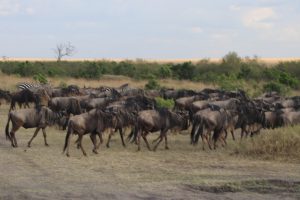 |
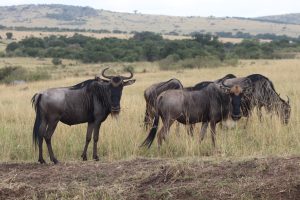 |
3. Bird Watching | Birding In Serengeti National Park
More than 500 different species of birds have been spotted in Serengeti National Park, making it one of Africa’s endemic bird habitats. Over 500 different bird species have been spotted in Serengeti National Park, making it one of the top spots in Africa for birdwatchers. The birds of Serengeti National Park can be easily identified if they are categorized into their respective families.
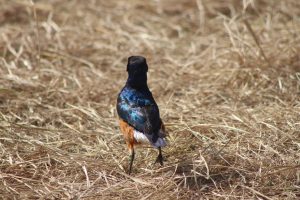
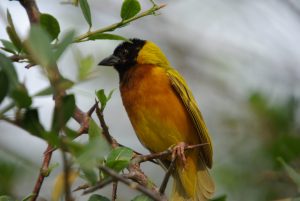
Some of the bird species found in Serengeti National Park are as follows:
Doves and pigeons. Among the many bird species found in Serengeti National Park, these are the most sociable and thus the easiest to spot.
Birds that resemble plovers and lapwings. These birds are well-adapted for life on land and sea because to their tiny, feathered legs. These birds are equally at home in the air and on the water.
Ostriches. The enormous, flightless birds of the genus Struthio, or Struthioniformes, are well-known. The eggs they produce are the biggest of any land mammal.
4. Breathtaking Game Drives In Serengeti National Park
The best times to see wildlife in Serengeti National Park are early in the morning and late in the evening. The best way to see the big five and other wildlife is to go on a game drive. Game drives in Serengeti can be enjoyed at any time of year thanks to the park’s reliably pleasant climate. Be careful to eat breakfast earlier than usual so you won’t feel hungry while exploring the Savanna.

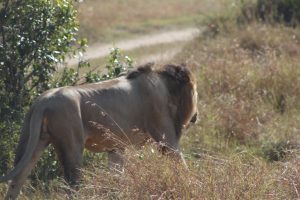
5. Grumeti River
The Grumeti River is a major feature of the Serengeti’s western corridor and eventually empties into Lake Victoria. Towards the west of the Seronera River Valley, the Grumeti River winds through the Western Corridor.
The 50-kilometer-long western corridor is made up of grassy savannah, riverine woodland, gentle hills, and shaded acacia trees. Those with a weak stomach should avoid the Grumeti River in the Kirawira section of the Western Corridor, but it is a must-see for nature lovers. There are several crocodiles in this region of the river, and they are all waiting for the migrating herd to cross so that they can feast on their fresh kill. But the wildebeests and zebras will risk everything to get where they’re going. Elephants, hippos, and monkeys are some of the other creatures who use the river’s waters.
There aren’t many tourists who venture out to this part of the Serengeti very often. Visitors that make the effort to come this far are rewarded with excellent leopard and lion populations, in addition to giraffes, hippos, cheetahs, elephants, and big Nile crocodiles.
Grumeti’s isolation ensures that you won’t be followed by a caravan of safari cars. During The Great Migration, about 30 safari vehicles congregate along the Mara River’s banks, but only about 15 will do so along Grumeti’s.
During the months of July through November, this area of the Serengeti is a prime spot to witness The Great Migration. Plus, previous tourists advise packing a picnic to enjoy by the river.
Kirawira Serena Camp offers lodging on the river’s south bank. There are picnic tables and a suspension bridge for pedestrians, but no other amenities. Access to the Grumeti River is always open and always free. If you want to learn more about the river, visit the park’s webpage.
Those who wish to avoid the parks’ busier and more expensive high season (mid-June through September) can consider visiting Grumeti River.
Traveling by air is the most convenient method to get to the Grumeti River, and the best time to go is late May or July, when you may see animals crossing the river and relocating their herds.
6. Big Cats In Serengeti National Park
Serengeti is a national park in northern Tanzania where visitors can go on safari and observe leopards, cheetahs, and lions, among other big cats. There are about 1,000 leopards, 3,000 lions, and 300 cheetahs living in Serengeti National Park.
- Lion
Safari goers to Tanzania often make seeing a lion their main priority because it is the most recognizable of the big cats. On a Tanzania safari, you can visit a number of national parks where you can get up up and personal with these fierce predators. This deadly hunter from Tanzania’s savannahs is known as the “Jungle King” or “king of the beast” because of the symbolism of regal power and prestige it carries.
- Cheetah
East African cheetahs are one of the most striking of the five cheetah subspecies found around the globe. Although you can catch a glimpse of this subspecies in Kenya, Uganda, and even Somalia, your best bet is to travel to Tanzania. This subspecies of cheetah is the largest and oldest of all cheetahs. They are distinguished from other members of their subspecies by a tear-mark that extends from one eye to the other and then over the lower lip.
- Leopard
You’ll have a better chance of encountering leopards in Tanzania’s northern national parks, and they’re one of the most ferocious big cats overall. The picturesque Seronera River Valley in Central Serengeti is one of the best places in Tanzania to see leopards. As Leopards are rather simple to identify, this area attracts a lot of wildlife photographers who want to get a good shot of the elusive cats in action. You may also go leopard-spotting in Manyara and Tarangire in addition to Serengeti Ngorongoro. It is unusual to see more than one leopard in a given area, with the exception of mating pairs or a mother and cubs.
7. Olduvai Gorge In Serengeti National Park
Additionally, Serengeti National Park is home to the significant Olduvai George attraction. The oldest human remains date back around a million years to the Olduvai Gorge. George here can be found in the Great Rift Valley, between the Ngorongoro Crater and the Serengeti National Park.
In Tanzania, at a place called Olduvai Gorge, archaeologists have discovered artifacts that date back to our oldest known human progenitors. Scientists studying the area’s prehistoric remains have concluded that humans originated in Africa because to the discovery of hundreds of fossilized bones and stone tools dating back millions of years.
The Maasai name for a native species of sisal plant is spelled incorrectly as “Olduvai.” Between the Ngorongoro Crater and Serengeti National Park sits the Great Rift Valley, where you’ll find the gorge. Laetoli, another site with many fossils, is only 30 miles away. About 30,000 years ago, due to vigorous geological activity and streams, Olduvai Gorge was constructed.
Though it’s not nearly as big as a canyon, the steep ravine measures roughly 30 miles (48.2 kilometers) in length and 295 feet (89.9 meters) in depth. The oldest of the four beds formed by the river is thought to be roughly 2 million years old.
8. The Bologonja Springs
Located in Northern Serengeti, a few kilometres northwest of Lobo valley, are the Bologonja springs. Headwaters of the Bologonja River are rarely visited by sightseers. As a result of the water provided by the springs, vegetation is able to flourish all year round.
Plenty of vegetation and a reliable water supply attract a wide variety of wildlife. Bologonja, deep within the North Serengeti, is a verdant and picture-perfect oasis. Here you can see kingfishers, hoopoes, and rollers, just to name a few of the many avian species that provide vibrancy to the landscape. Bologonja is home to various unique antelope species including the mountain reedbuck and steenbok thanks to its thriving resources. Buffalo and elephant herds of all sizes frequently visit the Larelemangi salt lick, which is located nearby.
A natural spring that emerges not far from the northern Serengeti border, fed by the Kuka hills. This is the beginning of the Bologonja River, which flows north and eventually joins the Mara River.
Tourists can expect to observe intriguing sights in the area due to the thriving environment, which includes a developing forest and animals that either permanently reside in the area or visit for water and grazing.
Located in the far northeastern corner of Serengeti National Park, these springs provide the source water for the Bologonja River, which ultimately empties into the Mara River via the North Serengeti.
Many kinds of birds call this place home year-round; you might spot kingfishers, hoopoes, rollers, or even the graceful crowned cranes soaring through the trees.
Notable antelopes found in this area include steenboks and reedbucks.
Once characterized as “a heaven on earth,” the springs have changed little since their discovery in 1913 by Stewart White.
About 3 km downstream from the springs is the salt lick of Bologonja, also called Larelemangi, which is a haven for wildelife and a striking contrast to the surrounding scenery.
Bologonja park gate, as well as the border with Kenya and the Maasai Mara National Reserve, may be reached in roughly 15 kilometers to the north
Highlight of Bologonja Springs
- Bologonja Springs is most famous for its abundant buffalo and elephant herds.
- Amazing birds and lush treetops
- A rare place, the Larelemangi salt lick is located close by.
- There are steenbok and mountain reedbuck in the mountains.
Size of Bologonja Springs
Bologonja Springs covers an area of less than one square mile.
Topography of Bologonja Springs
River Valleys, Springtime, Springs, Canopy Forests, and Salt Licks
Main Species of Bologonja Springs
The Vervet Monkey, Topi, Leopard, Steenbok, Reedbuck, Buffalo, Elephants, and Impala
9. Nature Walks In Serengeti National Park
Nature walk is defined as a walk on a nature trail mostly with a skilled guide. You need the assistance from the armed ranger if you would like to go on a safari walk inside the national park. This walk is not only through nature but will also bring you to the village and meet local people.
-
Lake Natron
Lake Natron in Tanzania is a highly inhospitable environment, with alkalinity levels above pH 12 and temperatures reaching 60 °C. The pinkish waters of the lake are the sole reliable breeding ground for 2.5 million lesser flamingos in all of East Africa. These intriguing animals have adapted to the lake’s high salt content, which provides a safe breeding ground free of natural enemies.
Away from civilization, wild, and alone you can find Lake Natron in northeast Tanzania, between the Serengeti plains and the Ngorongoro Highlands.
It is estimated that 2.5 million lesser flamingos use Lake Natron in East Africa as their major nesting habitat. The red tint of Lake Natron is caused by the presence of salt-loving microorganisms that are able to thrive in the lake’s extremely salty environment. Thousands of flamingos call these alkaline waters home since algae is the only food source available.
The flamingos performed magnificently, marching in perfect line with their proud heads held high. Observing them eat while holding their bills upside down is a fascinating sight.
Although Lake Natron in Tanzania is one of Africa’s most peaceful lakes, it is also the setting for some of the most surreal photographs ever taken, in which animals appear to have been transformed into statuestopi.
Lake Natron is home to extremely alkaline water, with a pH that can reach 10.5. This water is so strong that it can cause severe damage to the skin and eyes of animals that aren’t used to it. The alkalinity of the lake’s water is a result of the sodium carbonate and other minerals that seep down from the hills and into the lake. Animals that meet their untimely demise in Lake Natron are preserved wonderfully thanks to the presence of sodium carbonate deposits, the same substance employed in Egyptian mummification.
Location of Serengeti National Park
Serengeti National Park is situated in Northern part of Tanzania. The Park was formed in 1951 covering 5,700 square miles of some of the best grassland range in Africa and also extensive acacia woodland savanna. It is well known for its huge herds of plains animals mostly zebras, wildebeest and also gazelles and it is one of the places in Africa where vast land animal’s migrations still take place.
Accommodation In Serengeti National Park
There are plenty places to stay to suit all budgets and taste from basic campsites to tented safari camps as well as lodges. The following are the lodges and camps at Serengeti National Park;
Camping In Serengeti National Park
This refers to the recreation activity in which participants hold up temporary residence in the outdoors usually using tents. While on a safari at Serengeti National park, camping in the wilderness is also one of the popular activities.
Here are 3 of the best Serengeti budget safari lodges, mid range, and Luxury safari lodges.
There are a large number of lodging options available in the Serengeti as a result of the abundance of wildlife there.
Budget Accommodations in Serengeti National Park
- Serengeti Sound of Silence
To begin with, Serengeti Sound of Silence is a budget accommodation facility in Serengeti National Park. It is a 40 minutes’ drive from Seronera (SEU) airstrip. Additionally, Serengeti sound of silence is situated 6 km from Retima Hippo Pool.
The tents are comfortable. Also, the linen, duvets and mattresses are of high quality, guaranteeing your sleep comfort. There is hot and cold water on the taps, 24 hour electricity from our solar plant and permanent WIFI to share the photographs of the day.
Surprisingly, the best Safari experiences are all about being and remaining connected to the nature around you all day and night. The aim of Sound of Silence, therefore, is to provide the best facilities.
Sound of Silence is extraordinary. Currently, it has set a new standard for comfort as well as dining at the most affordable rates in the Serengeti.
Also, children of any age are welcome and those aged 16+ years are considered to be adults at this property.
Cot and extra bed policies
There is no capacity for cots at this property and also no capacity for extra beds at the property.
Dining
Sound of Silence offers an A la Carte menu, catering to most often found dietary requirements.
Also, many ingredients are delivered fresh each day. Others are stored using the most modern food handling techniques. This ensures only the best of quality and flavors for the guests.
Breakfast is a full buffet with hot items to order. There are also safari lunch boxes for those who will be out all day with their guides.
More Amenities:
- Free high speed WIFI
- King bed (200 x 220)
- Mosquito nets
- Daily housekeeping and also full turn down service
- Double vanities
- High pressure shower
- Ample electrical charging points for all devices
- Easy parking for self-drive guests and all guides
- Airport Transfers
Pets are definitely not allowed at Sound Of Silence lodge.
- Africa Safari Maasai Boma
Africa Safari Maasai Boma is a Budget Accommodation in Serengeti NP that is ideally located between Lake Natron and Africa Safari Ikoma. It is located only 20 minutes away from Serengeti National Park Klein’s gate.
Africa Safari Maasai Boma is a uniquely decorated accommodation with an ideal location. It has Kenya’s Maasai Mara in the background. And it is situated between Lake Natron in the east, Serengeti National Park in the west and Ngorongoro in the south.
At nighttime when you sit around the campfire, the Maasai storyteller will absolutely entertain you. Furthermore, they will tell you the legends and tales that have lived amongst the Maasai for hundreds of years.
- Nyitika Lodge
Nyitika Lodge is a Budget Accommodation in Serengeti NP that is located at 3.8 km distance from Sasakwa Hill. The lodge offers airport transfer service, 24 hour front desk assistance and also 24-hour security service.
Rooms
At Nyitika lodge, the rooms have a mini-bar, a flat-screen TV with satellite channels and also a work desk.
Eats & Drinks
The property has a bar with a spacious terrace and also a comfortable a lounge. You can spend some quality time there, relaxing, reading a book, having a drink or simply taking in the beautiful views of nature.
Internet
No internet access availab
Amentities
- Parking:
- Free parking:
- Parking on site:
- Private parking:
- Food & Drink
- Restaurant
- Room service
- Bar
- Breakfast in the room
- Packed lunches are also prepared
- Grocery deliveries
- Reception services
- 24-hour front desk also is available
- Private check-in/check-out
Common areas
- Terrace
- Shared lounge/TV area
- Non-smoking rooms
- Designated smoking area
- Transport
- Also there is an Airport shuttle
- Car hire
- Shuttle service (additional charge)
- Airport shuttle (additional charge).
- Cleaning services
- Ironing service
- Daily housekeeping
- Entertainment and family services
- Baby safety gates are also available
Activities
- Game drives
- Walking tours
- Tour or class about local culture too
- Safety & security
- 24-hour security
- Fire extinguishers.
Access to health care professionals
- Thermometers for guests are also provided by property
- Face masks for guests are also available
- Physical distancing is also a must.
- Contactless check-in/check-out
- Cashless payment is also available
- Physical distancing rules followed
- Serengeti Mawe camp
Firstly, Serengeti Mawe Camp is a budget accommodation in Serengeti NP with river views. Furthermore, the Camp is located in Serengeti and has a restaurant, room service, bar, garden and also a terrace. Additionally, both Wi-Fi and private parking are available at the lodge free of charge.
Other facilities
At the Camp, there is a fully equipped private bathroom with shower and free toiletries. Continental breakfast is available daily at Serengeti Mawe Camp. Also, there is a shared lounge at this property and guests can also go hiking nearby.
Amenities and facilities
- Internet access
- Free Wi-Fi in all rooms
- Internet services
- Services and conveniences
- Currency exchange
- Laundry
- Smoking area
- Terrace
For the kids
- Babysitting service
- Family room
- Kids meal
Mid range Accommodations In Serengeti National Park
- Ang’ata Serengeti Camp
Ang’ata Serengeti Camp is one of the top Serengeti safari camps. Ang’ata is the Maasai word for wilderness, appropriate for a camp with a natural setting and view of plains and wildlife.
It lies at the hub of the park. The camp offers game drives in all directions, including to Moru Kopjes, Maasai Kopjes with their rock art, N’gong Rocks, and the Grumeti River and western corridor. Expect to see big cats and the Big Five year-round, with the thrill of massive herds crossing the plains during the annual migration.
Relax at camp between game drives or enjoy a private bush lunch. Make time for a hot-air balloon ride high above the plains for a memory to treasure.
- Kiota Camp
Kiota Camp stretches out on Banagi Hill with a bird’s-eye view of the Seronera River Valley. Surrounded by woodland and grassland, it’s a quiet place to relax before and after your game drives to see the amazing density of wildlife.
Take a moment to admire Serengeti’s swathes of plains, umbrella trees and giant rock outcrops. Relax on your shaded porch with a pair of binoculars to watch passing animals or have a picnic lunch on the plains. Enjoy a hot bucket shower before dinner and sit around the campfire to listen to the calls of the night.
- Lamai Serengeti
On a jumble of giant rocks at Kogakuria Kopje stands Lamai Serengeti, commanding views of the herds crossing the plains below. This area bustles with topi, buffalo, giraffe and wildebeest year-round and you’re almost sure to see lion.
The camp is near the Mara River where you can see thousands of wildebeest and zebra hurl themselves into a river swarming with crocodile during the great migration.
After an action-packed game drive, relax and watch passing animals from your private veranda or the open-fronted communal lounge. Change gears to explore the kopjes (small rocky hills) on a bush walk with your guide.
- Melia Serengeti Lodge
Overlooking the Mbalageti River valley, Melia Serengeti Lodge blends African and colonial style. The lodge is surrounded by nature but doesn’t compromise on the services of a luxury hotel.
Experience the thrill of wildlife action that you’ve seen on nature documentaries. See lion, hear hyena call and smell the dust as wildebeest gallop across the plains. Explore on foot with your Maasai guide for a closer connection to nature.
Enjoy a bush picnic while nature thrums around you. Drink in the view of the valley from your terrace and relax at the pool or in the spa. Against a riotous canvas of the rising sun, take to the skies for a hot-air balloon ride over the plains.
5. Mbugani Seronera Camp
Imagine being close to the thrilling sights and sounds of the Serengeti, but with the comforts of home. That’s what you get at Mbugani Seronera Camp. Each large tent has its own sitting area or you can mingle with other guests in the lounge tent.
The camp overlooks a natural water source where you may see lion, leopard or buffalo. Enjoy action-packed game drives to appreciate how the Serengeti teems with wildlife.
Watch the sunset and relax in the circle of safari chairs around the campfire to enjoy stories from the guides. After dinner, retire to your tent and wake early for another exciting day.
Luxury Hotels In Serengeti National Park
- Singita Sasakwa Lodge
Singita Sasakwa Lodge is a old-world luxury lodge resembling a manor straight out of the Edwardian era. Regal indulgence is evident in every corner of the lodge, from the vintage collectibles dotted around the rooms to the Persian carpets laid out on polished parquet floors.
The atmosphere might be that of a bygone era, but Sasakwa ensures not one creature comfort of the modern age is missing, whether that’s something as simple as a hairdryer in each room or the large infinity pool overlooking the sprawling Serengeti plains.
Highlights:
- Set in Singita’s private Grumeti Reserve
- Panoramic views of the Serengeti from camp
- Tennis court
- Amazing stargazing opportunities
- Mwiba Lodge
Hidden high upon massive stone boulders ensconced by ancient coral and acacia trees, Mwiba Lodge exudes the grandeur and awe-inspiring affluence of a fabled lost city.
This opulent lodge seamlessly blends top-tier contemporary design with traditional African elements, elevating your safari experience to a level fit for royalty. Guest satisfaction is at the very top of the priority list, with the assurance of a private safari vehicle and guide per booking.
Highlights:
- Excellent views of the Serengeti
- Privacy and exclusivity
- Private safari vehicle
- Authentic cultural experiences with the local tribes
- Namiri Plains
Authentic African safari meets extravagant intercontinental getaway at Namiri Plains. Constructed on wooden decks and set under canvas in the Eastern Serengeti wilderness, this luxury tented camp offers top-tier modern comforts and designs.
Couple this with impeccable personalized service and you’ll forget that you’re in the middle of the Tanzanian bushland, not a five-star hotel.
Highlights:
- Guaranteed big cat sightings, particularly cheetah
- Optional hot-air balloon safaris
- Award-winning private camp
- Authentic African safari experience
- Set on the Great Migration route
- Sanctuary Kichakani Camp
View the most climactic moments of the Great Migration in the lap of luxury at Kichakani Camp. The resplendent mobile camp prides itself on providing prime viewing spots to nature’s best show.
Watch as wildebeest, zebra, gazelles and predators alike make their way down the seasonal path, all from the comfort of a 19th century-inspired setting.
Highlights:
- Prime location for viewing the annual Great Migration
- Under-canvas provides an authentic safari feel
- Bushtops Luxury Tented Camp
Calling all newlyweds, your perfect honeymoon getaway awaits at Bush tops! The mix of secluded locale, the soothing sounds of nature and the magical backdrop of the Serengeti landscape make for a unique romantic ambiance.
Stargazing from the deck of your tent, sipping bubbly while soaking in the private hot tub or sharing a couple’s massage after a game drive – Bush tops opulent setting and five-start service will make you even happier to be betrothed.
Highlights:
- Private jacuzzi in each tent
- Private butler on hand 24/7
- Well known for its wine selection
Serengeti National Park is well known as the holy Mecca wildlife because of its vast host of a wide range of wildlife in the park. The Park has the largest concentration of predators in Africa. Wildlife which is protected in this region includes the big five, that is to say; leopards, lions, elephants and buffalos.

